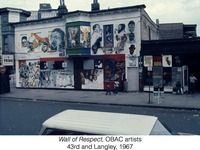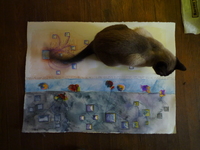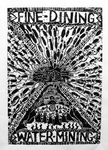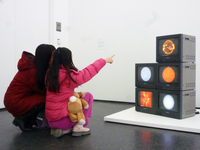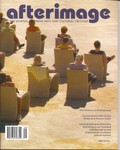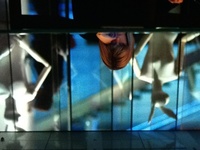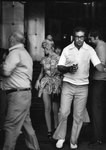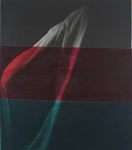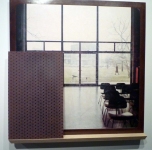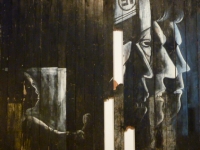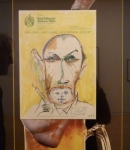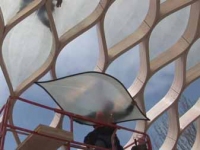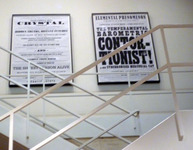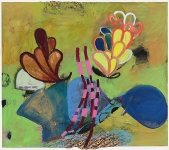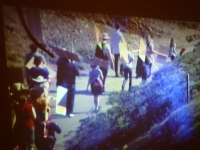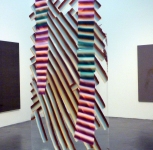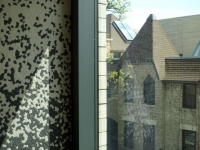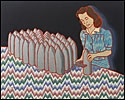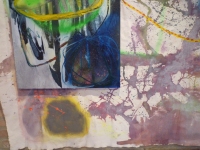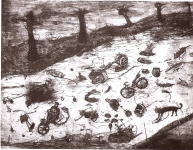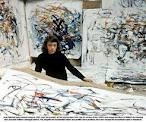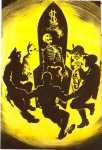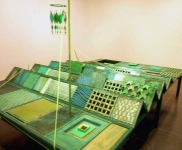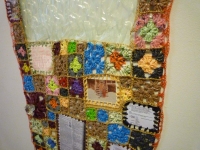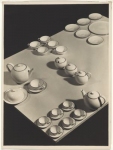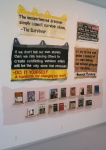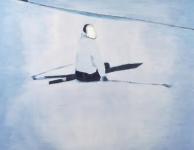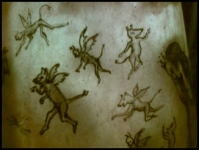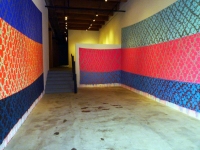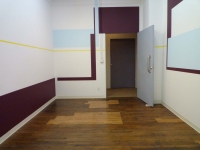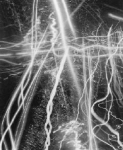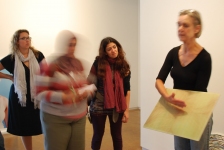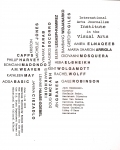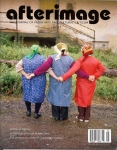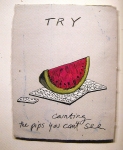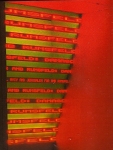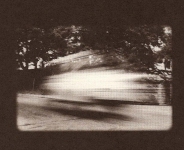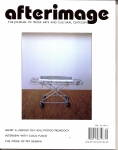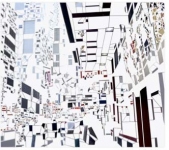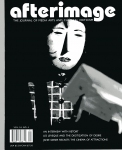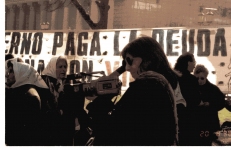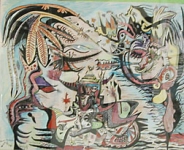Recent Writing
Published Reviews
Walls of Prophecy and Protest: William Walker and the Roots of a Revolutionalry Public Art Movement By Jeff W. Huebner
Book Review posted: 4/5/20
The New Art Examiner
http://www.newartexaminer.org/walls-of-prophecy.html
Book Review posted: 4/5/20
The New Art Examiner
http://www.newartexaminer.org/walls-of-prophecy.html
Thoughts in and on Quarantine
March 2020
AICA (Association International Critiques des Artes, USA Division)
March 2020
AICA (Association International Critiques des Artes, USA Division)
Art Critics on Emergency is a real-time collective diary by AICA-USA members about the impact of the COVID-19 pandemic on art critics, artists, arts institutions, art education, and the arts at large. AICA-USA members are invited to submit journalistic reflections and critical observations about this moment as it unfolds.
American Factory Reichert and Bognar
Hyperallergic August 20, 2019
Hyperallergic August 20, 2019
https://hyperallergic.com/513923/american-factory-documentary-netflix/
The Essay Film in Time and Space: An Interview with Mark Cousins
Afterimage: The Journal of Media Arts and Cultural Studies
Vol.46 #1
Afterimage: The Journal of Media Arts and Cultural Studies
Vol.46 #1
The historic first part-time faculty union in the nation at Columbia College held the two-day strike to convey to the administration the seriousness of unresolved bargaining issues.
Read Here: https://hyperallergic.com/414986/strike-at-columbia-college-chicago-spotlights-problems-for-part-time-faculty/?utm_source=email&utm_medium=social&utm_campaign=sw
Hyperallergic December 2017
Read Here: https://hyperallergic.com/414986/strike-at-columbia-college-chicago-spotlights-problems-for-part-time-faculty/?utm_source=email&utm_medium=social&utm_campaign=sw
Hyperallergic December 2017
The Seasons In Quincy: Four Portraits of John Berger
Afterimage: The Journal of Media Arts and Cultural Criticism
March/April 2017 vol. 44 no. 5
Afterimage: The Journal of Media Arts and Cultural Criticism
March/April 2017 vol. 44 no. 5
Rineke Dijkstra: Rehearsals
Milwaukee Art Museum Fall 2016
Afterimage: The Journal of Media Arts and Cultural Criticism
V.44, No. 4
Milwaukee Art Museum Fall 2016
Afterimage: The Journal of Media Arts and Cultural Criticism
V.44, No. 4
Book Review: The Volatile Smile
Afterimage: The Journal Of Media Arts and Cultural Criticism
November/December 2015 Vol.43 No.3
Afterimage: The Journal Of Media Arts and Cultural Criticism
November/December 2015 Vol.43 No.3
By Beate Geissler, Oliver Sann, Brian Holmes
Verlag fur moderne Kunst
NÜRNBURG
2014/179 pp.
Verlag fur moderne Kunst
NÜRNBURG
2014/179 pp.
Sarah And Joseph Belknap at the MCA
Afterimage: The Journal of Media Arts and Cultural Criticism
v.42 no.6 May/June 2015
photo: Janina Ciezadlo
Afterimage: The Journal of Media Arts and Cultural Criticism
v.42 no.6 May/June 2015
photo: Janina Ciezadlo
Report: Unsuspending Disbelief: The Subject of Pictures
Symposium at the Grey Center Lab, Midway Studios
The University of Chicago November 2014
Afterimage: The Journal of Media Arts and Cultural Criticism Vol. 42 No. 4
Symposium at the Grey Center Lab, Midway Studios
The University of Chicago November 2014
Afterimage: The Journal of Media Arts and Cultural Criticism Vol. 42 No. 4
photo: Thomas Struth: Janina Ciezadlo
The Way of the Shovel: MCA January 2014
Afterimage the Journal of Media Arts and Cultural Criticism Vol. 41 No.2
Image: Tacita Dean. The Russian Ending
Afterimage the Journal of Media Arts and Cultural Criticism Vol. 41 No.2
Image: Tacita Dean. The Russian Ending
It's The Economy, Stupid at Gallery 400
Newcity November 2013
Newcity November 2013
http://art.newcity.com/2013/11/19/review-its-the-political-economy-stupidgallery-400/#more-15119
Or click on image
Or click on image
Marketing and Dreaming: Two Films about the Future of Europe
Afterimage: The Journal of Media Arts and Cultural Criticism
September/October Vol.41 NO.2
Afterimage: The Journal of Media Arts and Cultural Criticism
September/October Vol.41 NO.2
People of the North Portal
Barbara Crane
Generative Dynamics 2009
Barbara Crane
Generative Dynamics 2009
I have added this review because the site where it could be found Bauhaus 90/90 no longer exists.
R.H. Quaytman: Passing Through the Opposite of What it Approaches, Chapter 25
The Renaissance Society January 2013
Newcity Art January 2013
The Renaissance Society January 2013
Newcity Art January 2013
"Planning and Maintaining a Perrenial Garden III," Faheem Majeed
Chicago Cultural Center
Newcity Art 2013
Chicago Cultural Center
Newcity Art 2013
De-Natured: German Art from Joseph Beuys to Martin Kippenberger
Block Museum, Northwestern University
Newcity 10.09.12
Block Museum, Northwestern University
Newcity 10.09.12
Black Night Falling: Black holes and Constellations Kerry James Marshall at Monique Meloche
Newcity Arts March 2012
Newcity Arts March 2012
Prints and The Pursuit of Knowledge in Early Modern Europe
The Block Museum of Art
NewCity February 2012
The Block Museum of Art
NewCity February 2012
Profile of the Artist: Molly Zuckerman-Hartung
NewCity Art February 2012
Negative Joy at Corbett vs. Dempsey
NewCity Art February 2012
Negative Joy at Corbett vs. Dempsey
The Wroclaw School of Printmaking: Faculty of the Eugeniusz Geppert Academy of Fine Art and Design
Chicago Cultural Center
NewCIty Art January 2012
Chicago Cultural Center
NewCIty Art January 2012
Image: What is Going On in Zeglarska Street?
Jacek Szewczyk
Jacek Szewczyk
Eye Exam: Joan Mitchell's Life and Art
Joan Mitchell, Lady Painter Patricia Albers
NewCity November 22
Joan Mitchell, Lady Painter Patricia Albers
NewCity November 22
Lewis Baltz: Producing Anonymity
Afterimage: The Journal of Media Arts and Cultural Criticism
vol.38 no.4
Afterimage: The Journal of Media Arts and Cultural Criticism
vol.38 no.4
Profile of the Artist: Phillip Hanson
New City September 2010
The Subtle Diagram (When in Disgrace...)
New City September 2010
The Subtle Diagram (When in Disgrace...)
Light Revisited:Elements of Photography at the MCA
Afterimage: The Journal of Media Arts and Cultural Criticism v.37, no.3 2009
International Arts Journalism Institute for the Visual Arts
June 2009
American University, Washington DC
June 2009
American University, Washington DC
Writings are from the IAJIVA
Blog.
Blog.
The Collaborative Vision: Image Influenceing Words and Words Influencing Images
Chicago Artist's New
April 2009
Chicago Artist's New
April 2009
From The Monthly Scan
January 2009
January 2009
Review of Protect, Protect, Jenny Holzer at the Museum of Contemporary Art
Afterimage: The Journal of Media Arts and Cultural Criticism
History and Memory
Vol. 33 No. 4
History and Memory
Vol. 33 No. 4
Burnt Oranges
by Silvia Malagrino
2005
by Silvia Malagrino
2005
Major and Minor:Media Coverage of the Arts in Chicago and Beyond
Chicago Artist's Coalition News
June 2007 and July/August 2007
Volume XXXIV #6 and #7
June 2007 and July/August 2007
Volume XXXIV #6 and #7
Surrealism Here and Now
From Artscope 2002
From Artscope 2002
Image: Return to Cibola by Franklin Rosemont, Penelope Rosemont and Ody Saban 2002



